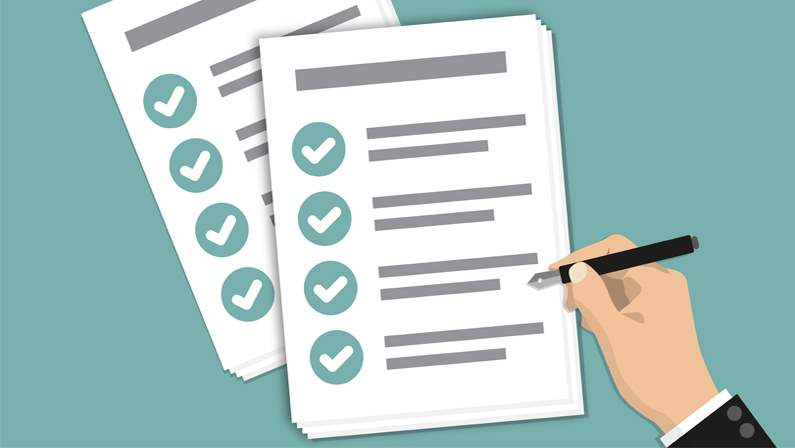Spring into Action: Hiring Checklist for Employers

This article is Part Two of a two-part blog series, in which we compiled a checklist for candidates (Part One) and employers (Part Two).
According to the U.S. Bureau of Labor Statistics, the number of job openings rose to “a series high of 11.5 million” by the end of March 2022. Many employers are struggling to fill lower-level vacancies while juggling to hire leaders who can retain their employees during this candidate-driven market. With so much to do in so little time, we compiled this hiring checklist to help navigate you in selecting the right executive for your team.
Preparing for the Hiring Process
☑ Create or update your job description. Similar to a resume, a company’s job description is the first impression an applicant will have, either about the role or the company itself. If it has been a while since the executive role was vacant, update the job description accordingly. Are there additional responsibilities? Is the position using different programs? If you are drafting a job description for a brand-new role, what duties and skills are desired that are lacking in current positions?
☑ Define your ideal executive. There are bound to be multiple applicants who are qualified for the position, but that does not mean they all will be a good cultural fit. Creating an ideal executive candidate profile helps narrow down professionals to who will excel as a leader while getting along with the team.
☑ Understand the current job market. Are you currently in an employer-driven or candidate-driven market? Is the position in high demand? Research the current market conditions and adjust your recruitment strategy based on your findings.
☑ Establish a competitive compensation and benefits package. Employers are competing for the top executives in the industry. What sets your company apart from the rest? Before you start recruiting, determine your hiring budget. What should the salary range and incentives be that will get executives interested in working for your organization?
☑ Develop a timeline. Commit to a feasible timeline with your hiring team to track your progress throughout the process. Decide on your target date to hire and plan in reverse. How long will applications be open? How many rounds of interviews will you conduct? Will applicants be expected to take additional assessments? How much time will your team need to deliberate over candidates?
Recruiting Candidates
☑ Market the employer brand and role. To attract candidates naturally, strive to build a positive employer brand. Job seekers’ priorities have shifted since the pandemic, and they are starting to value company culture and better work-life balance more than ever before. What makes your employees happy to be working at your organization? Be proactive with your recruiting strategies, including promoting the employee experience through your company website and social media.
☑ Draft a customized email/InMail message. Personalize your message to candidates to increase your chances of getting a response. The email or InMail should highlight the role and company and explain why you think they would be a great asset for your team.
☑ Create a simplified and user-friendly application process. Surprisingly, 92% of job seekers do not complete their job applications after clicking “Apply.” If your company has a low submission rate, place yourself in the candidate’s shoes and fill out the application. Is the application too long? Are there unnecessary questions that can be removed to streamline the process?
☑ Turn to other resources. If you require more assistance with your search, look into posting your jobs on industry-specific job boards or hire a recruiting company that is right for your needs.
Interviewing Candidates
☑ Review resumes in advance. Review the applicant’s resume before their interview and take notes. This allows you to prepare questions related to the candidate’s background and job experience that may need further clarification during the interview.
☑ Ask interview questions tailored to the organization and role. Whether you are in the first or final round of interviews, this stage is your last chance to get to know the candidates outside of their resumes. Review the executive candidate profile you created earlier on in the hiring process. Based on your ideal candidate, what questions can you ask to determine if an applicant fits the criteria?
☑ Follow up with all interviewees after deciding on a new hire. While constantly communicating with your top candidates plays a priority, avoid ghosting candidates who did not make the cut. Failing to follow up will leave a negative impression and discourage them (and connections they may inform) from applying in the future. You never know if they will be suitable for a different opening you need to fill down the road.
Steve Jobs once shared, “The secret to my success is that we’ve gone to exceptional lengths to hire the best people in the world.” To recruit top executives, you should not cut corners in the hiring process. Instead, handle the process thoughtfully to show candidates why you are an employer of choice. By using this checklist, we hope that you will be well-equipped for finding your stellar executive, while also strengthening your employer brand.
Bristol Associates, Inc. is an executive search firm with over 50 years of excellence in recruiting nationwide. Bristol specializes in recruiting for the Casino Gaming; CBD; Facilities and Concessions; Food and Beverage Manufacturing; Hospital and Healthcare; Hotels and Resorts; Nonprofit; Restaurant; and Travel, Tourism, and Attractions industries.
If you’re interested in working with Bristol Associates, click here if you’re an employer or here if you’re a candidate.
Subscribe to our monthly newsletter here.

